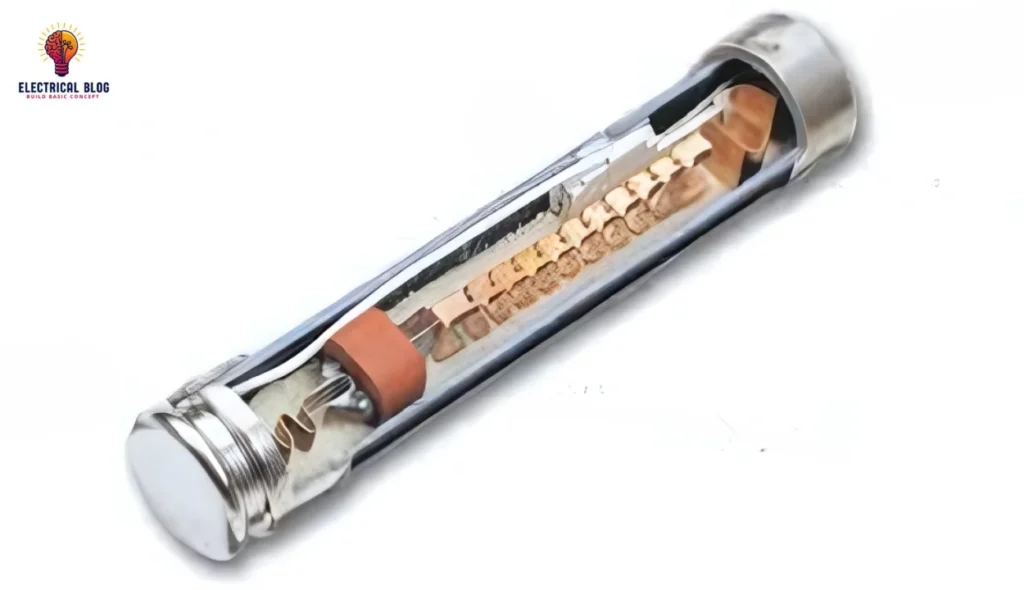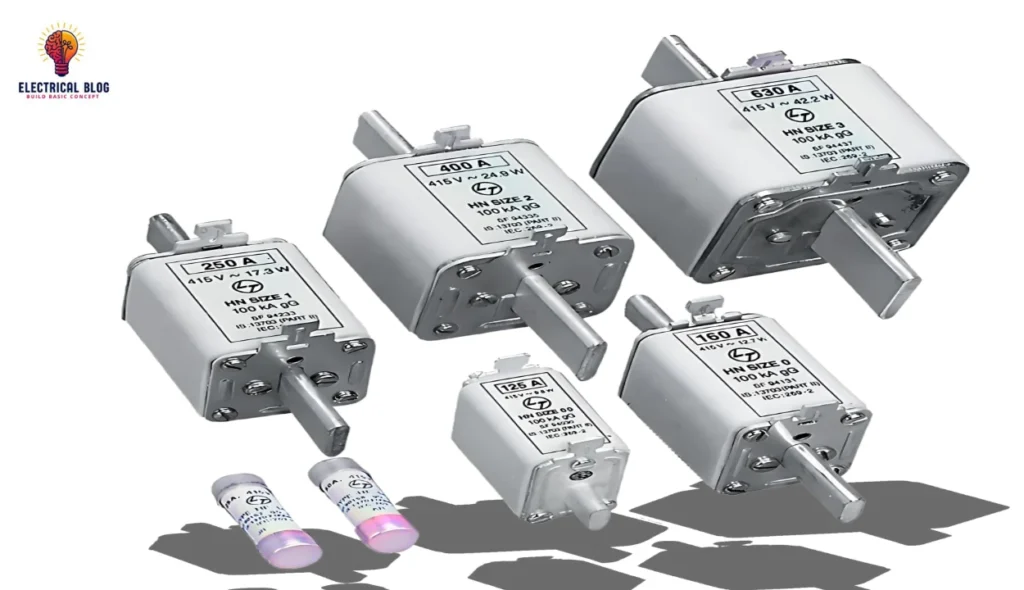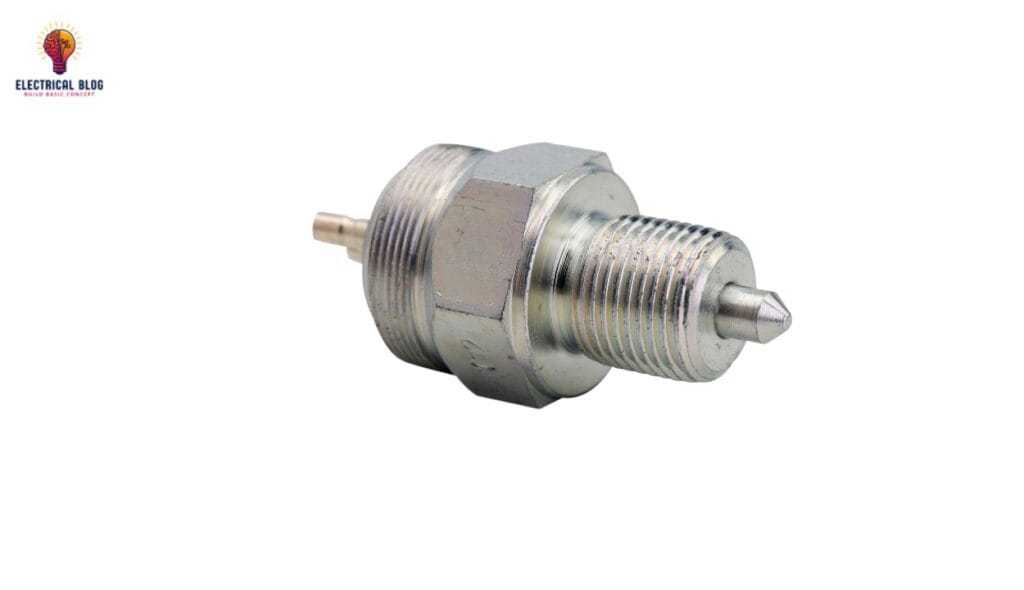What is an HRC fuse?
An HRC Fuse (HRC fuse full form: High Rupturing Capacity) is a crucial safety component in electrical systems, designed to protect circuits by stopping an overcurrent before it damages equipment. The defining factor of an HRC Fuse is its ability to handle considerably higher fault currents than the normal operating current of an electrical circuit. This ability comes from its construction and materials, which play a more significant role than the internal fuse element, as the latter only determines the opening speed and normal current-handling capability.
These fuses come in a variety of shapes, sizes, and electrical specifications, making them suitable for specific applications. Unlike other types of fuses, when an HRC fuse is blown, it must be replaced to restore circuit protection. These fuses are manufactured with high precision, ensuring they function safely to stop power surges and keep electrical systems secure. The reason behind their effectiveness lies in their robust construction, which enables them to operate reliably under high fault conditions.
Working Principle of an HRC Fuse
An HRC fuse is designed to provide protection by safely breaking the circuit when the current exceeds a set safety threshold. Under normal operation, the fuse remains intact, allowing regular flow of electricity without interruption. The silver and copper conductors inside the fuse are designed to handle the current within safe limits, preventing degraded performance or electrical damage. However, when a short circuit or sudden increase in current peak occurs, the silver wire inside the fuse rapidly heats up, reaching its melting point and causing the fuse to melt almost instantly. This quick action disconnects the circuit in milliseconds, effectively stopping the power flow and preventing potential damage.
If the circuit becomes overloaded, where the current is higher than normal but not a short circuit, the fuse does not blow immediately. Instead, the increased temperature slowly affects the protective materials, causing the process to occur more gradually. Over time, the silver wire may weaken, leading to a reduced ability to conduct electricity. If left unchecked, this can turn minor problems into major hazards, requiring the fuse to be replaced to prevent further risks. This slower response helps protect the system while avoiding unnecessary shutdowns.
In cases of a severe short circuit, the fuse follows a targeted design to direct the excess current towards a weak point—a deliberately narrowed section that reaches its melting point much faster. This design ensures that the flow of electricity is stopped in the shortest possible time, minimizing the risk of wider circuit damage. The fuse acts as a safeguard, ensuring electrical systems function efficiently while preventing costly failures.
Construction of an HRC fuse
An HRC fuse is housed in a ceramic housing that is both rugged and heat-resistant, allowing it to withstand high temperatures and electrical surges. This material selection is critical for ensuring safe operation, as it protects the internal components from damage during electrical faults and extreme conditions. The fuse is designed with metal end caps that secure the silver conductors, forming strong pathways for electrical current. These conductors are made from thin silver wire, chosen for its excellent conductivity and low resistance, allowing electricity to flow smoothly under normal conditions.
Inside the fuse, the silver conductor is filled with a mixture of finely powdered materials such as quartz, plaster of Paris, and chalk. These materials help absorb heat and react chemically when silver melts, forming a high-resistance barrier that extinguishes any potential arcing, increasing the safety and reliability of the fuse. This controlled reaction prevents excess molten metal vapor from spreading, ensuring that the fuse responds effectively to faults.

HRC fuses with a tripping device
An HRC fuse with a tripping device is designed to quickly interrupt the current when a fault condition occurs. The fuse body is made of ceramic material with a metallic cap fixed at each end, connecting a series of silver fuse elements. When a fault occurs, the first element to be blown out is the silver fuse, transferring the current to the tungsten wire. This triggers the plunger, which activates the tripping mechanism of the circuit breaker, causing it to operate and interrupt the power supply. The plunger is carefully set so that it is not ejected from the fuse body during this process. The fusible link ensures a controlled response, preventing damage while maintaining electrical safety.
Types of HRC fuses
NH Type
NH-type fuses are designed to provide overload protection and prevent faults in low-voltage circuits and medium-voltage systems. Their strong yet lightweight construction makes them suitable for critical electrical equipment, including motor starters and industrial machinery. These fuses act quickly to detect and respond to abnormal currents, ensuring rapid response and disconnecting the power supply to prevent potential damage. In industrial environments, where equipment is operated continuously, the reliability of Type NH fuses is essential to maintain uninterrupted service and system safety.
DIN Type
DIN-type fuses are widely used for various purposes due to their wide range of rated currents and specific characteristics under different temperature conditions. These fuses provide transformer protection and work effectively in systems with no LV secondary or backup protection. Their clearing capability ensures ideal low overcurrent protection with excellent short-circuit performance. They are commonly found in applications such as air-insulated switchgear, gas-insulated switchgear, transformers, mining, and feeder sectionalizing, making them highly reliable across different voltage levels.
Blade Type
Blade-type fuses, also called spade fuses or plug-in fuses, have a plastic body with metal caps that fit into a socket. They are commonly used in automobiles for wiring safety and short-circuit protection. These fuses are lightweight and provide backup protection for motors. Available in various sizes and shapes, they have different current rating capacities, which are printed on the top for easy identification. Their low cutoff current ensures precise protection in electrical circuits.
Performance Characteristics of HRC Fuse
An HRC fuse plays a crucial role in protecting an electrical system by detecting fault currents and preventing system damage. When the electric current increases abnormally, the conductor inside the fuse, often made of silver or copper, begins to heat up due to the heat energy generated.
A rapid increase in temperature causes the fuse to reach its melting point quickly, allowing it to interrupt power immediately and stop further damage. The strength of the current directly affects how fast the fuse responds—the greater the fault, the faster the fuse passes the energy and breaks the circuit, significantly reducing the risk of failure. This unique feature enables the fuse to handle abnormally high surges effectively, ensuring that power distribution remains safe.
For lower fault levels, the fuse has a slower response, allowing time for the conductors to build up enough heat before it melts. This design helps avoid premature tripping and unnecessary power interruptions, ensuring the fuse operates only when necessary. The I²t value determines how the fuse is tailored for a specific intended application, helping operators and maintenance personnel in selecting the correct fuse. By understanding the key parameters and making precise settings, professionals can optimize system safety, align fuse performance with safety requirements, and improve operating efficiency for long-term reliability.
Advantages of HRC fuses
HRC fuses are a cost-effective solution for both industrial applications and commercial applications, making them a top choice in environments with a tight budget. These fuses are inexpensive and have a simple design with no complex mechanical components or electronic components, which reduces the likelihood of failure and other operational problems. Their simplicity makes them less prone to frequent issues, minimizing replacements and making them a reliable option for businesses. Additionally, HRC fuses lack complex components, meaning they require no maintenance, helping to minimize the time and costs associated with repairs, making them a low-maintenance choice.
One of the key advantages of HRC fuses is their ability to handle extremely high currents, often in the range of hundreds or thousands of amps. This feature makes them highly effective for overload protection, especially in environments with high load demands. They also have an inverse time characteristic, allowing them to adjust their opening time based on the severity of the fault, providing customized protection for different types of current anomalies. This functionality enhances system security by ensuring a controlled response to power fluctuations.

Disadvantages of HRC fuses
One major drawback of an HRC fuse is that it is single-use and must be replaced after it works, as it cannot be reset or reused. In systems that fail frequently, this can lead to higher replacement costs over the long term. Additionally, every time the HRC fuse is activated, the system must be shut down to replace it, causing downtime and disrupting production, which negatively impacts operational efficiency. Another concern is the large amount of heat generated during a fault, which can shorten the life of the fuse and pose a risk to nearby electrical components, complicating maintenance and increasing safety hazards.
Application of HRC fuses
HRC fuses are indispensable in high-voltage power systems, ensuring safety by protecting switchgear from short circuits, overload damage, and abnormal current flow. They are designed to react quickly to high current loads, preventing potential system failures. In electric motors, particularly during startup and shutdown phases, these fuses protect the motor stator windings from overloading and damage, improving efficiency and longevity. Technicians rely on them to ensure that electrical devices operate safely in extreme currents and high-voltage line environments. Similarly, transformers require HRC fuses to guard against internal faults, external influences, and abnormal currents, ensuring a stable power supply and long-lasting operation in high-voltage power transmission and distribution systems.
In the automotive sector, HRC fuses play a vital role in protecting electronic components and circuits from voltage surges, maintaining vehicle safety and performance. They also safeguard modern vehicles, which heavily rely on electronic systems for operation and safety functions. Furthermore, these fuses are essential in safety maintenance, particularly for motor stator protection, where they quickly disconnect in case of extreme currents, ensuring the security of maintenance personnel and critical electrical components. In backup protection systems, HRC fuses act as failsafes, serving as the last line of defense to prevent catastrophic failures in case the primary system fails, ensuring ongoing protection and avoiding serious consequences in critical system applications.
Breaking capacity of an HRC fuse
One of the defining characteristics of an HRC fuse is its breaking capacity, which refers to the maximum fault current it can safely interrupt in a circuit and is expressed in amperes. For example, a glass M205 fuse, a type of LBC fuse, has an interrupting rating of 10 x rated current, meaning a 16A fuse can safely protect against an overload current of 160A.
In contrast, a ceramic M205 HRC fuse has a much higher interrupting rating of 1500A, regardless of its ampere rating. The ceramic M250 fuse can stop overloads nearly 10 times higher than a glass LBC fuse, even though their physical size and voltage rating remain identical. This makes HRC fuses a high breaking capacity solution for critical electrical systems.
HRC Fuse Speeds and Sizes
HRC fuses come in a variety of fuse speeds, ranging from very fast-acting fuse types for semiconductor protection to slow-acting fuse speeds for motor protection. The element speeds include semiconductor fuse speeds such as aR, gR, and gS, while general-purpose fuse speeds like gG, gL, and gF are designed for standard applications. Additionally, slow-acting fuse types such as aM and gM provide controlled protection, while special-purpose fuse speeds like gPV, gB, and gTr cater to specific needs, making DIN NH blade fuses highly adaptable.
The physical size of an HRC fuse can vary depending on its intended application and voltage rating. Fuses with higher voltage ratings often have a longer body to reduce the likelihood of arcing within the fuse. HRC cartridge fuses designed for low voltage applications may be as small as 38 mm, whereas medium voltage fuses can exceed 500 mm in length. These variations ensure reliable performance across different electrical systems.
Conclusion
HRC fuses play an essential role in modern electrical systems, offering a preferred solution for protecting circuits due to their high breaking capacity, superior performance characteristics, and unique design. They are an indispensable component in various environments, ensuring electrical safety despite some disadvantages, such as their single-use nature and exposure to high temperatures. However, their lack of maintenance and wide range of applications make them highly reliable. As technology advances and safety standards increase, the design and application of these devices will continue to evolve to meet the growing safety demands of the future, reducing risks while improving efficiency in various aspects of electrical protection.
Read more



